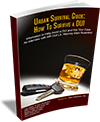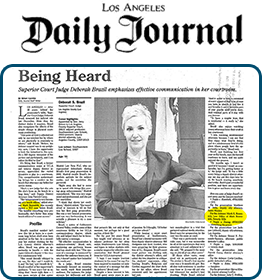Can Factors Like Diet or Exposure to Certain Chemicals Affect Breathalyzer Test Results?
Breath test results can be affected by the presence of various contaminants or situations. The most prevalent concern with regard to breath testing is residual mouth alcohol, in which the alcohol content being read was coming from heavily saturated mucous membranes in the mouth and upper throat, rather than from the lungs and airways, which can lead to an artificially high reading on a breath testing instrument.
Breath testing can also be subject to a lot of physiological variables; for example, there is the person’s breathing pattern before they blew into the machine which can affect the reliability of the breath test result, as can the air temperature at the time they blew into the machine, whether or not they were running a fever or a lower body temperature, meaning a lower breath temperature. Other factors that can interfere with a breath test and cause it to give a false reading can include radio frequency interference from a police radio or a cell phone that is too close to a breath testing instrument, although there hasn’t been enough research to know how that may affect a breath test.
A breath test may also be affected by other contaminants that may be present in the area where the breath test was taking place, including cleaning solvents and solutions, paints, lacquers, thinners, or even something present in the person’s clothing that may have come from their work environment; someone who worked around volatile organic compounds may inhale it and it may work its way out and cause an inaccurate reading on a breath testing instrument. Many variables have to be taken into consideration when dealing with breath testing before it’s possible to know whether or not a number was trustworthy and reliable.
Can the Person’s Breathing Pattern Affect Their Breathalyzer Test Results?
Breathing patterns can affect the breath testing result; how someone breathed into the machine can determine how much air and how much alcohol passed through the machine before it was able to get a sample. Both formal and informal studies and research have shown that the way someone breathes, whether it was deep or shallow breathing or they hyperventilated before giving a breath sample, can affect the ultimate reading on the machine, which can be very important since officers are often improperly trained with regard to how a breath sample should be obtained from a subject. They often encourage people to blow harder and longer, and they may continue to yell or encourage them to keep blowing throughout the breath testing cycle, which is not required with modern day breath testing instruments. When officers do this and the subject blows hard into the machine, the more likely it is for them to score a higher blood alcohol result.
How Do People Refuse Breath Tests?
In California, someone who was lawfully arrested for driving under the influence is required to submit to a chemical test, which may be either a breath or a blood test, and the law states that there are enhanced penalties if anyone either refuses to perform the tests, although those penalties not only apply to refusal, but also for the inability to complete a test. For example, if someone agrees to the breath test even though there may not have been a properly working breath test machine available or they had asthma and were unable to blow enough air to provide a valid sample, they would have to take one of the other tests, like a blood test, and if they don’t agree, that can be deemed a refusal. People often attempt to take either a breath or a blood test, but for reasons beyond their control, they are unable to successfully complete them; however, they have to submit to something.
When someone is taken for a blood draw, the person drawing the blood may be inexperienced, inaccurate or incapable of successfully getting blood from the person. Perhaps the sample is too small; it’s not unusual for a DUI suspect to get poked many times, and, sometimes, the person drawing the blood is unable to get a usable, valid sample from the person because they did not know what they were doing.
What Is a False Refusal and How Does It Impact a Case?
We occasionally see situations in which police officers write up people as having refused the chemical test when, in fact, they did not refuse the test, but for whatever reason, a sample was not taken. This situation arises very often during breath testing when someone agrees to take a breath test or possibly even has taken a breath test by the side of the road, but they were arrested and taken to the station and told they had to take the “real” test, which is the implied consent test taken for DMV or court purposes.
Certain protocols and safeguards are in place that are supposed to make sure the machine tests a valid and trustworthy sample, but they often do not work correctly, which means someone can blow into the machine and the machine may not accept the sample, either because it may not meet sample parameters, it may not be a hard enough blow, there may not be enough air or it may not be the right type of breathing pattern. It’s also possible for the machine to simply malfunction. Looking at the usage records for a particular machine will show how many times the person blew into the machine, how much air was blown and whether it was a trustworthy and reliable sample. We sometimes see situations where the person blew a valid sample, but the machine reported that it did not meet the sampling parameters, so an officer may override the machine and say it was a refusal, whereas the machine was simply saying it did not get the requisite information, because it needed two breath samples within a certain period of time and it only got one.
The usage records on the machine may show that the person had, in fact, provided two valid breath samples, but since they were not within six minutes or whatever the machine was programmed to accept, they still may be written up for a refusal. This can occur even though the person had complied with Title 17, complied with implied consent and complied with the officer’s instructions. The attorney may be able to find out if there were valid samples obtained, so as to override the DMV, get a set-aside and show a prosecutor what the true breath test results were. When dealing with breath testing, depending on the machine that was used, it may be possible to see what the sample and the profile looked like when someone blew into the machine, including how much air they blew and the steps of the machine’s own internal protocols for getting an accurate sample. There are situations in breath testing in which someone may be blowing and providing the sample, but the machine just did not accept the sample as valid.
When dealing with blood testing, there are often problems with the person drawing the blood not being properly trained or being unqualified to the point of being unable to do it correctly. They may poke the person many times or switch between arms or the back of the hand or possibly even a leg, whereas if they had gone to a hospital and had a professional do it, it would have been done right the first time. Problems can definitely come up with the phlebotomist or the person drawing the blood that may be read as a refusal even when they had not refused. It may be because the equipment may have been faulty; often, blood analysis kits are carried around in police cars for a long time, sometimes causing them to corrode or decay The problem may be the equipment itself, which had become faulty.
The blood has to be drawn into a “Vacutainer”, which is a vacuum-sealed blood tube, and a blood tube that was compromised or old may not have the appropriate amount of suction, preventing it from being under a vacuum. This can explain why someone may get a short draw or no blood draw, even if the technician had inserted the needle the correct way. There is room for error and for officers to write up a refusal when the person was actually trying to comply, whether dealing with breath or blood.
This does not include officers who write up cases as refusals based on a subject not passing their attitude test, meaning the police officers did not like them; they may write it up as a refusal to make the penalties worse. Sometimes, after the officer spends time with someone, they may figure they’re not over the legal limit, so they worry that their credibility might be compromised, prompting them to deem a refusal without conducting a thorough investigation, which makes it very hard to contest when there is no scientific evidence, which is why these types of cases generally have to go to a jury.
When Building a Case, What Evidence Do Attorneys Review in Order to Refute Breath Test Results?
The attorney has to start from the very beginning of the case when analyzing a breath test in a DUI case, since everything going on in a DUI case is based on the chemical test analysis. The credibility of the officer is also a key factor, including judgment of his training and experience with DUIs, what he did from the time that officer stopped the person, what objective or other symptoms they saw, their driving pattern and their performance on the field sobriety tests. If the officer lacks credibility with regard to the initial investigation, it will be questioned with regard to properly administering a breath test. Timing is also very important, as is proper observation and the proper deprivation period, which can be determined through field activity reports, mobile data computer logs, time cards or whatever can be obtained to determine the timing of the investigation.
We will assess the data observation period made at the police station and whether the machine was properly administered. Then we will look on the back end to see what the machine did. When conducting a thorough DUI investigation, we have to know whether or not the officer was trained on the make and model of machine used, whether they took and passed a class and then passed a written and a practical examination. We will then look at what went on with that particular machine: how often was it checked for accuracy; what was going on with the internal standards of the machine; what was going on with the calibrators and simulators used to check for accuracy; what the accuracy check, maintenance and usage logs looked like to see what the machine was doing in the real world.
The machine may look perfectly good on paper and have passed all of its tests successfully, but we need to know how it performed in the field. We might see cases in which subjects had to blow many times to get a sample (with many of these cases having been refusal cases, which may be far more than is statistically likely). We would also look at which machines were being not used; one might have been used all day, every day, whereas the other may not be used at all, perhaps because there was something wrong with it which caused officers to stay away from it. Calibration, maintenance and usage would all be important aspects to examine when analyzing a breath case in a DUI.
What Are the Most Common Misconceptions About Breathalyzer Tests?
One of the misconceptions people have regarding breath testing is that it is a true and accurate science. People believe that the number is always trustworthy and reliable. In fact, breath testing is not an exact science, and readings tend to vary, using averages and speculation. The machines don’t indicate the person’s blood alcohol level at the time of driving, and they can’t say whether that person was actually scientifically and physically impaired for the purposes of driving. Breath testing devices have room for error. We have heard of cases during the last few years in which supposedly state-of-the-art breath testing instruments were removed from service due to significant contamination and procedural errors. We’ve also heard they were removed because the machines were just not trustworthy and did not give accurate readings; therefore, it was decided they couldn’t be used to try to convict someone of driving under the influence.
For more information on Breathalyzer, a free initial consultation is your next best step. Get the information and legal answers you’re seeking by calling (310) 424-3145 today.






 Personal Attention
Personal Attention








